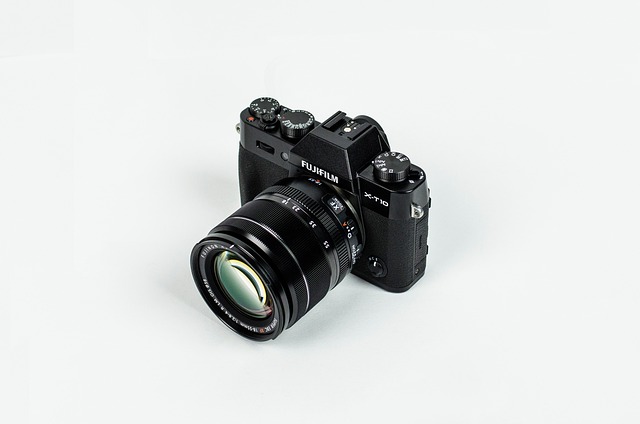Looking for a Camera with Payment Plans? Here’s What’s Available
Several retailers offer installment payment options for cameras, helping you spread the cost over time. Whether you need a DSLR, mirrorless, or compact model, these plans can make it easier to get the camera you want without paying everything upfront.

What Types of Camera Payment Plans Are Available?
Camera financing comes in several forms, each designed to accommodate different financial situations and preferences. Traditional retail financing typically offers 6, 12, 18, or 24-month payment plans with varying interest rates. Many retailers partner with financial institutions to provide promotional zero-percent APR periods, often lasting 12 to 18 months for qualified buyers. Buy-now-pay-later services have gained popularity, offering shorter-term payment splits of 4 to 6 installments without traditional credit checks. Some specialty camera stores also provide rent-to-own arrangements, though these generally carry higher total costs. Additionally, store credit cards frequently feature special financing promotions specifically for electronic purchases, including photography equipment.
Which US Retailers Offer Camera Finance Options?
Major electronics retailers across the United States have embraced camera financing to attract customers. Best Buy provides financing through their store credit card and partnerships with services like PayPal Credit, offering promotional periods with deferred interest. B&H Photo, a photography specialist, partners with Affirm and PayPal Credit for flexible payment arrangements. Amazon integrates multiple financing solutions, including their own installment plans for Prime members and third-party services like Affirm. Adorama, another photography-focused retailer, offers various financing partnerships including Affirm and synchrony financial services. Target provides RedCard financing options, while Walmart offers Affirm at checkout for camera purchases. Local camera shops often work with regional credit unions or specialized equipment financing companies to provide competitive alternatives to national chains.
Can You Finance a Camera Without a Credit Check?
While most traditional financing requires credit verification, several alternatives exist for those seeking to avoid hard credit inquiries. Buy-now-pay-later services like Klarna, Afterpay, and Sezzle typically perform only soft credit checks that don’t impact credit scores. These services focus more on current income verification and bank account activity than credit history. Some retailers offer layaway programs where customers can reserve cameras by making small payments over time before taking possession. Rent-to-own companies generally don’t require traditional credit checks but verify income and employment instead. Additionally, secured credit cards or co-signer arrangements can help individuals with limited credit history access traditional financing options. However, it’s important to note that avoiding credit checks often means higher costs or shorter payment terms.
What Should You Consider Before Financing a Camera?
Several critical factors deserve careful evaluation before committing to camera financing. Interest rates significantly impact total costs, making it essential to compare APR across different financing options. Payment terms should align with your budget, considering both monthly payment amounts and total repayment periods. Hidden fees, including origination charges, late payment penalties, and early payoff restrictions, can substantially increase overall expenses. Your current financial stability and ability to maintain consistent payments throughout the agreement term requires honest assessment. Additionally, consider whether the camera’s technology will remain current throughout the financing period, as rapid technological advancement in photography equipment can affect long-term value. Insurance options for financed equipment protection against damage or theft should also factor into your decision-making process.
What Are the Latest Camera Financing Trends in the US?
The camera financing landscape has evolved significantly, reflecting broader changes in consumer purchasing behavior and financial technology. Point-of-sale financing integration has become seamless, with approval decisions often rendered within seconds at checkout. Mobile-first payment platforms have gained traction, allowing customers to manage financing directly through smartphone apps. Subscription-based camera access models are emerging, where users pay monthly fees for equipment rotation and upgrades rather than traditional ownership. Cryptocurrency payment options have begun appearing at some specialty retailers, though adoption remains limited. Social commerce integration allows customers to discover and finance cameras directly through social media platforms. Additionally, artificial intelligence-driven credit assessment is enabling more personalized financing offers based on comprehensive financial profiles rather than traditional credit scores alone.
Camera Financing Cost Breakdown and Provider Comparison
Understanding the financial implications of different camera financing options helps inform smarter purchasing decisions. The following comparison illustrates typical costs and terms available through major US retailers for a hypothetical $1,500 camera purchase.
| Provider | Financing Partner | Interest Rate | Payment Term | Monthly Payment | Total Cost |
|---|---|---|---|---|---|
| Best Buy | Store Credit Card | 0% (12 months) | 12 months | $125.00 | $1,500 |
| B&H Photo | Affirm | 10-30% APR | 24 months | $73-88 | $1,752-2,112 |
| Amazon | Affirm/Prime | 0-15% APR | 18 months | $83-92 | $1,494-1,656 |
| Adorama | PayPal Credit | 0% (6 months) | 6 months | $250.00 | $1,500 |
| Target | RedCard | 5% discount + 0% | 12 months | $118.75 | $1,425 |
Prices, rates, or cost estimates mentioned in this article are based on the latest available information but may change over time. Independent research is advised before making financial decisions.
Camera financing has transformed from a luxury service to a standard retail offering, making professional photography equipment accessible to broader audiences. While these payment plans provide valuable flexibility, careful evaluation of terms, rates, and personal financial circumstances remains essential for making informed decisions. The evolving landscape of digital payment solutions continues expanding options, though traditional considerations of affordability and necessity should guide any financing choice. Whether pursuing photography as a hobby or profession, understanding available financing mechanisms empowers better equipment acquisition strategies aligned with individual budget constraints and creative aspirations.




